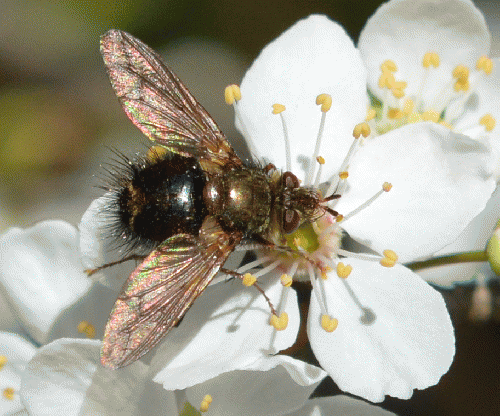The pesticide manufacturers play on confusion and quickly point out the other things killing bees, like varroa mites, viruses, and fungi. As mentioned earlier, these other factors are more lethal to insects that have been poisoned but are not in the 50% of their cohort who died outright. These pollinators would much more likely be successful fighting off these assaults if they were healthy. They would also be more likely to breed enough generations to develop a resistance to them. The way things are, insects in general are in big trouble and the pesticide problem is much greater than most people realize.
My 97-year-old aunt in Illinois recently observed that there are not as many birds as there used to be around her house and garden. The above referenced Wikipedia paragraph about the near universal use of neonics in ubiquitous corn and soybeans grown in the midwest tells me that she lives in a grossly poisoned area of the US.
Clair Thompson writes in Grist,
"The chemical industry alleges that bees don't like to collect corn pollen, but new research shows that not only do bees indeed forage in corn, but they also have multiple other routes of exposure to neonics.
"The Purdue University study, published in the journal PLoS ONE, found high levels of clothianidin in planter exhaust spewed during the spring sowing of treated maize seed. It also found neonics in the soil of unplanted fields nearby those planted with Bt corn, on dandelions growing near those fields, in dead bees found near hive entrances, and in pollen stored in the hives." [9]
I am frankly surprised that there are birds still living at all in such a location.
As can be seen, it becomes very difficult to know if the plants one buys for providing beautiful flowers, and in turn pollen and nectar for pollinators, have been treated with pesticides either as seeds or during greenhouse nurturing. Most plant sellers do not know the history and their desire to sell pretty plants makes them reluctant to find out. They would rather not know because the customer wants both beautiful plants and healthy bees, so it is easier to stop the discussion at beautiful plants, avoid the part about bees, and make the sale. I have come to the conclusion that if the plant is not certified organic, or the buyer does not know the history, it is most likely toxic.
For toxin-free plants, I trust local seed swaps and most of my neighbors, and store-bought plants labeled "organic" or "neonic free." The only nursery in my area that came up pretty clean was Cloud Mountain. I did not check all the plant nurseries: There may be others who are careful about sourcing toxin-free plants so it is important to do your own checking. When you do so, make sure to trace products all the way back to the seed. A plant catalog I have from Prairie Moon Nursery says it clearly in a section it entitles "Just Say No to Neonicotinoids:"
Neonicotinoids (neo-nih-CAH-tin-oids) are sysemic chemicals which are absorbed into the plant's vascular system, leaving the entire plant toxic to both target and ton-target insects. This class of insecticides is particularly harmful to bees. Prairie Moon has never used these insecticides and is proudly neonicotinoid FREE. We have also confirmed that our partnering seed and plant producers do not use this persistent and harmful class of chemicals." [10]
Next Page 1 | 2 | 3 | 4 | 5 | 6
(Note: You can view every article as one long page if you sign up as an Advocate Member, or higher).







